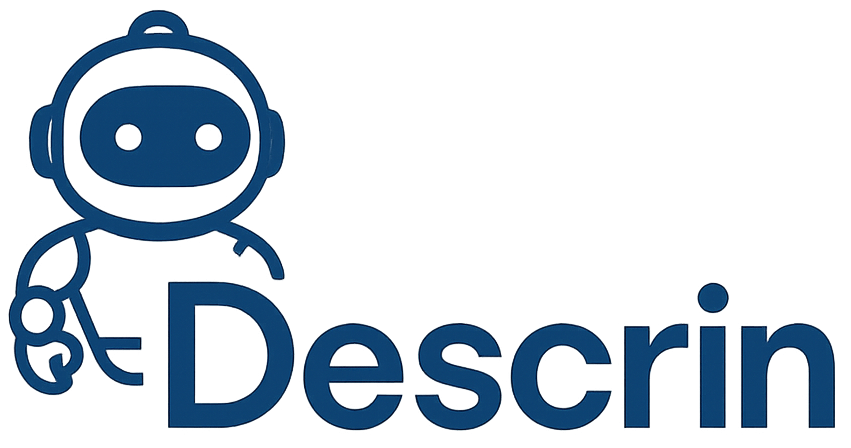How AI Influences the Ranking of Australian Universities
You might know that artificial intelligence is changing many parts of our lives. This includes education. Australian universities are using AI to improve teaching, research, and how they run things.
Australia’s Department of Education has a plan for using AI in schools. It wants to help teachers, keep students safe, be open, fair, accountable, and private.

As AI gets better, it’s key to see how it will change university rankings. Using AI well can really help Australian universities rank higher. So, it’s important for them to use AI wisely.
Table of Contents
The Evolution of University Rankings in Australia
The story of university rankings in Australia is one of change and growth. As the world of higher education shifts, so do the ways we rank universities.
Traditional Ranking Methodologies
For a long time, rankings in Australia focused on research output, teaching quality, and graduate employability. These methods use surveys, publication records, and other numbers to judge a university’s success.
Research output is counted by looking at publications and citations. Teaching quality is judged by student and teacher feedback. Graduate employability is measured by job rates and salaries after graduation.
| Ranking Factor | Traditional Metrics |
|---|---|
| Research Output | Number of publications, Citations |
| Teaching Quality | Student surveys, Faculty qualifications |
| Graduate Employability | Employment rates, Graduate salaries |
Limitations of Conventional Ranking Systems
Traditional rankings have their downsides. One big issue is bias in how data is gathered and analyzed. These systems also miss out on many aspects of a university’s strengths and weaknesses.
For instance, they might not consider community involvement, student happiness, or the overall student experience. This can give a skewed view of a university’s true value and potential.
Understanding How AI Influences the Ranking of Australian Universities
AI technologies are changing how Australian universities are ranked. Old ways of ranking are now mixed with AI. This makes the evaluation of universities more detailed.
AI is making big changes in many areas, including education. It helps rank universities based on many factors.
AI-Driven Data Collection and Analysis
AI is leading the way in collecting and analyzing data. It uses machine learning algorithms and natural language processing. This way, AI can look at lots of data from different places.
A study found that AI can handle big data better than old methods. It gives a clearer view of what makes a university strong or weak.
Machine Learning Algorithms in Ranking Processes
Machine learning is key in ranking universities. It finds patterns in data that humans might miss. These algorithms can also predict how universities might do in the future.
For example, machine learning checks the quality of research. It looks at how often papers are cited and who works together. This helps know how good a university’s research is.
By using AI and machine learning together, rankings become more fair and complete. These changes will keep shaping education in Australia.
Key AI Technologies Transforming University Rankings
University rankings are changing thanks to AI. These technologies make rankings more accurate. They also give a better view of how well universities do.
AI uses advanced technologies to rank universities. These technologies change how we look at universities.
Natural Language Processing for Academic Publication Analysis
Natural Language Processing (NLP) is key in analyzing academic papers. It looks at lots of research to judge its quality and impact. NLP helps see how much influence a university has through its research.
NLP can look at many research papers at once. It finds trends and areas where universities excel. This info is crucial for ranking universities.
“The application of NLP in analyzing academic publications has opened new avenues for assessing research quality and impact, making university rankings more comprehensive.”
Dr. Jane Smith, AI Researcher
Predictive Analytics in Student Outcome Assessment
Predictive analytics is also changing university rankings. It uses past data and trends to predict student success. This helps see if universities are preparing students well for the future.
Predictive models find what helps students succeed. Universities can then improve their programs. Ranking agencies get data on a university’s graduates’ future success.
Big Data Processing Capabilities
Handling big data is a big plus for university rankings. AI can process lots of data from many sources. This lets for a detailed and accurate look at university performance.
| AI Technology | Application in University Rankings | Benefits |
|---|---|---|
| Natural Language Processing | Analyzing academic publications | Assesses research quality and impact |
| Predictive Analytics | Forecasting student outcomes | Evaluates student success and employability |
| Big Data Processing | Handling large datasets | Provides comprehensive view of university performance |
AI technologies make university rankings better. They give a clear view of what universities are good at and what they need to work on. As AI gets better, it will play an even bigger role in ranking universities.
How AI Enhances Objectivity in University Assessments
AI is changing how we rank universities by making evaluations more objective. Traditional rankings have faced criticism for being too subjective and biased. AI brings a new, fair way to measure universities.
Reducing Human Bias in Evaluation
AI helps by cutting down on human bias in grading. It looks at lots of data without personal opinions getting in the way. For example, AI checks research based on its quality, not who wrote it.
Key benefits of AI in reducing human bias include:
- Objective data analysis
- Consistency in evaluation criteria
- Elimination of personal prejudices
Standardizing Performance Metrics Across Institutions
AI also makes sure all universities are judged the same way. By using the same tools, rankings become fairer. This makes university rankings more trustworthy and useful.

| Metric | Traditional Assessment | AI-Driven Assessment |
|---|---|---|
| Data Analysis | Manual, prone to human error | Automated, highly accurate |
| Bias in Evaluation | Significant risk of human bias | Minimized through objective algorithms |
| Standardization | Limited, varies by institution | High, consistent across institutions |
With AI, university rankings will be more accurate and fair. They will truly show what each institution can do.
AI-Powered Metrics Reshaping Australian University Rankings
AI is changing how Australian universities are ranked. It offers a more detailed look at how well universities perform. This change is exciting for those looking into higher education.
AI-driven data analysis is leading this transformation. It allows for a deeper evaluation of university performance. This is a big step forward, as it considers more data than traditional methods.
Research Output and Citation Analysis
AI is making a big difference in how research is evaluated. It can handle large amounts of data to judge research quality. This includes looking at how often research is cited and its overall impact.
Thanks to natural language processing (NLP) and machine learning, AI can understand research better. It goes beyond just counting citations to see the real impact of research.
Teaching Quality Assessment
AI is also improving how teaching quality is measured. It looks at student feedback and learning outcomes. This helps see how well teaching methods work.
This approach gives a fuller picture of university performance. It shows that teaching is just as important as research.
Graduate Employability Predictions
AI is also used to predict how well graduates will do in the job market. It looks at job trends and graduate success. This helps students choose the right university.
This tool also helps universities focus on teaching the skills employers want. It’s a win-win for everyone.
AI is changing university rankings in Australia for the better. These AI-powered metrics give a clearer view of university performance. By understanding these changes, you can make better choices about your education.
Case Studies: Top Australian Universities Leveraging AI for Ranking Improvement
Australian universities are using AI to get ahead in global rankings. They’re improving data analysis, research, and rankings with AI. This is a big step forward.
University of Melbourne’s Data-Driven Strategy
The University of Melbourne is leading with a data-driven approach. It uses AI analytics to understand its research, student success, and more. This helps improve its ranking.
Key initiatives include:
- AI tools for better research and citations.
- Predictive analytics for student and graduate success.

University of Sydney’s AI Research Initiatives
The University of Sydney is pushing AI research. This research boosts its ranking and drives innovation. It focuses on new AI methods and uses across disciplines.
Notable achievements:
| Initiative | Description | Impact |
|---|---|---|
| AI for Social Good | Projects using AI to solve big social problems. | Better reputation in social research. |
| AI in Education | AI tools for better learning and student success. | Improved education outcomes. |
Australian National University’s Digital Transformation
The Australian National University (ANU) has transformed with AI. It’s made operations more efficient and boosted research and ranking. This is a big change.
Key aspects of ANU’s digital transformation:
- AI tools for better research collaboration.
- Big data analytics for smarter decisions.
These examples show how top Australian universities are using AI. They’re improving rankings with data strategies, AI research, and digital changes. This not only boosts their global standing but also advances AI in education.
Challenges and Ethical Considerations in AI-Based Rankings
AI is changing how we rank universities in Australia. But, there are big challenges and ethical issues to face. It’s important to know these to keep rankings fair and honest.
Data Privacy Concerns
AI rankings collect and use a lot of data. This raises big data privacy concerns. Universities must protect sensitive info and be clear about how they collect data.
For example, the Australian National University has strong data protection. They keep student and staff info safe.
Algorithm Transparency Issues
There’s a problem with how open AI ranking systems are. Algorithm transparency is key to knowing how rankings are made. It helps spot any unfair biases.
“The lack of transparency in AI-driven ranking systems can lead to mistrust among universities and stakeholders.”
Digital Divide Among Universities
Universities with better tech have an edge in AI rankings. This creates a digital divide. It makes rankings less fair and accurate.
| Challenge | Description | Potential Impact |
|---|---|---|
| Data Privacy Concerns | Collection and analysis of sensitive data | Risk of data breaches and privacy violations |
| Algorithm Transparency Issues | Lack of clarity in AI algorithms | Mistrust and potential biases in rankings |
| Digital Divide | Unequal technological infrastructure among universities | Unfair advantages in rankings |
In conclusion, tackling these issues is crucial. We need AI rankings that are fair, open, and good for everyone involved.
How AI Rankings Impact Student Decision-Making
AI rankings are changing how students choose colleges. With AI, students have better tools to pick their future schools. This helps them make smarter choices.
Personalized University Recommendations
AI gives students personalized university recommendations. It looks at their grades, interests, and career dreams. Then, it suggests colleges that fit them best.
This helps students find colleges they might not have thought of. It could lead to a better match and more happiness.
For example, a student into environmental science might get college suggestions with great sustainability programs. This advice is super helpful in choosing the right college.
Enhanced Career Outcome Predictions
AI also helps predict career paths. It looks at job rates, salary, and industry trends. This lets students choose colleges that match their career goals.
The table below shows how AI helps understand career outcomes at different colleges.
| University | Graduate Employment Rate | Average Starting Salary |
|---|---|---|
| University of Melbourne | 85% | $60,000 |
| University of Sydney | 82% | $58,000 |
| Australian National University | 88% | $62,000 |

AI rankings help students choose colleges better. As AI gets better, it will give even more tailored advice. This will help students in their studies and careers.
What American Students Should Know About AI-Influenced Australian University Rankings
American students thinking about studying in Australia need to know about AI’s role in university rankings. AI is changing how schools are ranked. It’s important to understand this for making good choices.
“The use of AI in university rankings is changing how schools are judged,” says Dr. Jane Smith, an education expert. “It’s key for students to understand these changes to pick the best school for them.”
Interpreting AI-Enhanced Rankings from a US Perspective
American students should know how AI rankings are different from old methods. AI rankings use more data, like research, student results, and social impact.
Key factors to consider:
- Data sources used in AI algorithms
- Weightage given to different performance metrics
- Transparency in AI-driven ranking methodologies
Comparing US and Australian Ranking Systems
US and Australian ranking systems share some similarities but also have big differences. Both use old and new metrics, but focus on different things.
Australian rankings might focus more on international students and global partnerships. This shows Australia’s big role in international education. American students should think about these differences when looking at rankings.
Knowing these differences helps you make a better choice about studying in Australia.
Conclusion
AI is changing how universities are ranked, especially in Australia. It’s making rankings more accurate and fair. This is thanks to AI’s ability to collect and analyze data better than before.
AI will keep changing university rankings in big ways. Soon, rankings will be more precise and tailored to your needs. This will help you choose the right university for your studies.
But AI’s impact isn’t just in Australia. It’s changing how universities are ranked all over the world. As AI grows, it will help make university rankings better, more transparent, and relevant for students everywhere.
FAQ
How is AI influencing the ranking of Australian universities?
AI helps analyze big data. This gives a deeper look into how well universities do. It makes rankings more accurate and fair.
What traditional factors are used in Australian university rankings?
Old ways of ranking looked at research and teaching quality. But, these methods have been criticized for being biased and incomplete.
How does AI-driven data collection and analysis impact university rankings?
AI looks at many factors, not just the old ones. This gives a clearer picture of how universities perform.
What AI technologies are being used to transform university rankings?
AI uses natural language processing for papers, predictive analytics for student success, and big data for handling lots of information.
How does AI enhance objectivity in university assessments?
AI cuts down on human bias. It makes sure all universities are judged the same way. This leads to fairer rankings.
What AI-powered metrics are being used to reshape Australian university rankings?
AI looks at research, teaching, and how well graduates do jobs. This gives a full view of university quality.
How are top Australian universities leveraging AI to improve their rankings?
Top universities like Melbourne and Sydney use AI for better decisions and research. They’re also going digital to get better rankings.
What are the challenges and ethical considerations associated with AI-based university rankings?
There are worries about privacy, how algorithms work, and fairness among universities. These need careful thought and action.
How do AI rankings impact student decision-making?
AI rankings help students find the right university. They give personalized advice and career predictions. This helps students choose wisely.
What should American students know about AI-influenced Australian university rankings?
American students should know how to understand AI rankings. They should also know the differences between US and Australian ranking systems.
How do AI algorithms in university ranking work?
AI algorithms look at lots of data. They check things like research, teaching, and job success. This gives a complete ranking.
What is the impact of machine learning on university rankings?
Machine learning finds complex data patterns. This gives insights for better rankings. It makes rankings more accurate and detailed.
How does data analytics contribute to university ranking?
Data analytics is key for ranking. It analyzes big data to see how universities do. This shows their strengths and weaknesses clearly.







